The spruce budworm (TBE) is the most destructive insect of conifer stands in North America. In Quebec, TBT mainly consumes the annual foliage of the balsam fir, the white spruce and, to a lesser extent, the red spruce and black spruce.
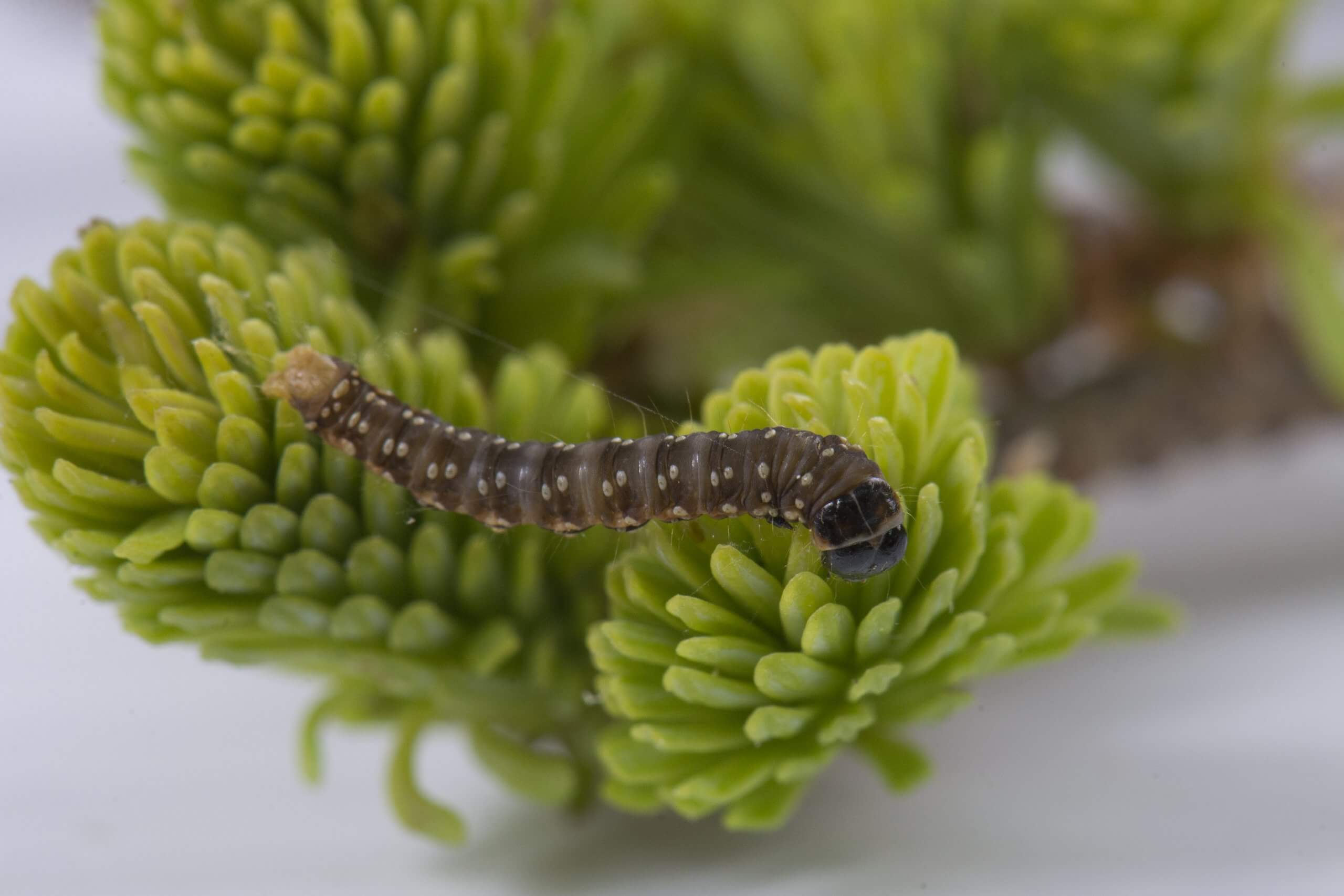
The Spruce Budworm
About the insect
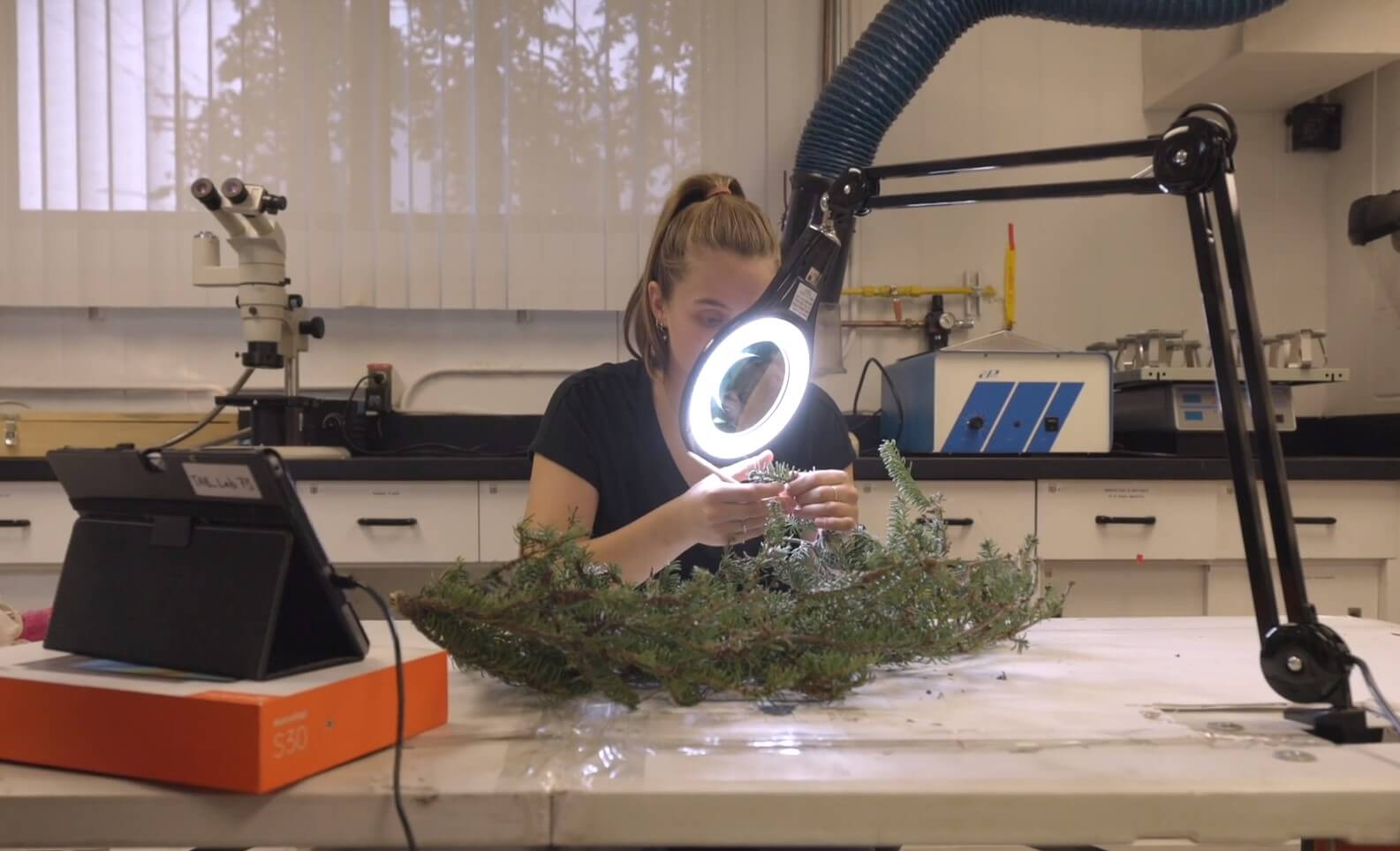
The insect plays an important ecological role, including the rejuvenation of some old-growth forests and the creation of many habitats for several species. Caterpillars feed on balsam and spruce needles of all ages, whether located in deciduous, mixed or resinous forests. Fir is less resistant to TBT than spruce. It is said to be more vulnerable. This vulnerability increases with the age and density of the stands in which it is found.
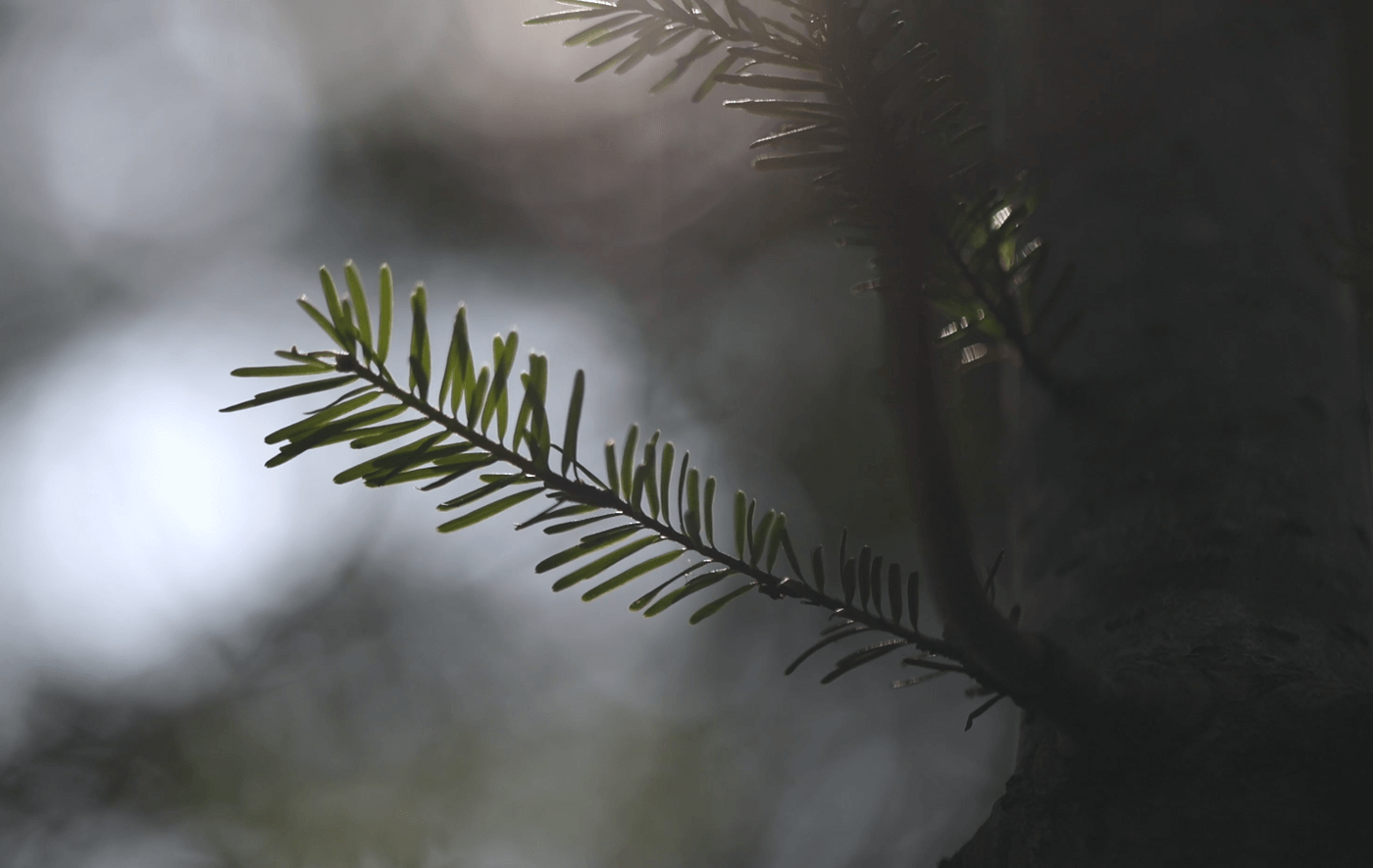
When the epidemic continues for several years, the foliage sometimes becomes insufficient to ensure the survival of the tree, and the mortality of the trees begins and progresses according to their vulnerability. Over the years, defoliated trees take on a greyish hue that reflects the gradual disappearance of foliage. At least four consecutive or nearly consecutive years of severe shoot defoliation are required before the first trees die. TBT epidemics are cyclical, meaning that they return about every 30 to 35 years. Each outbreak can last 15 to 20 years in the same area.
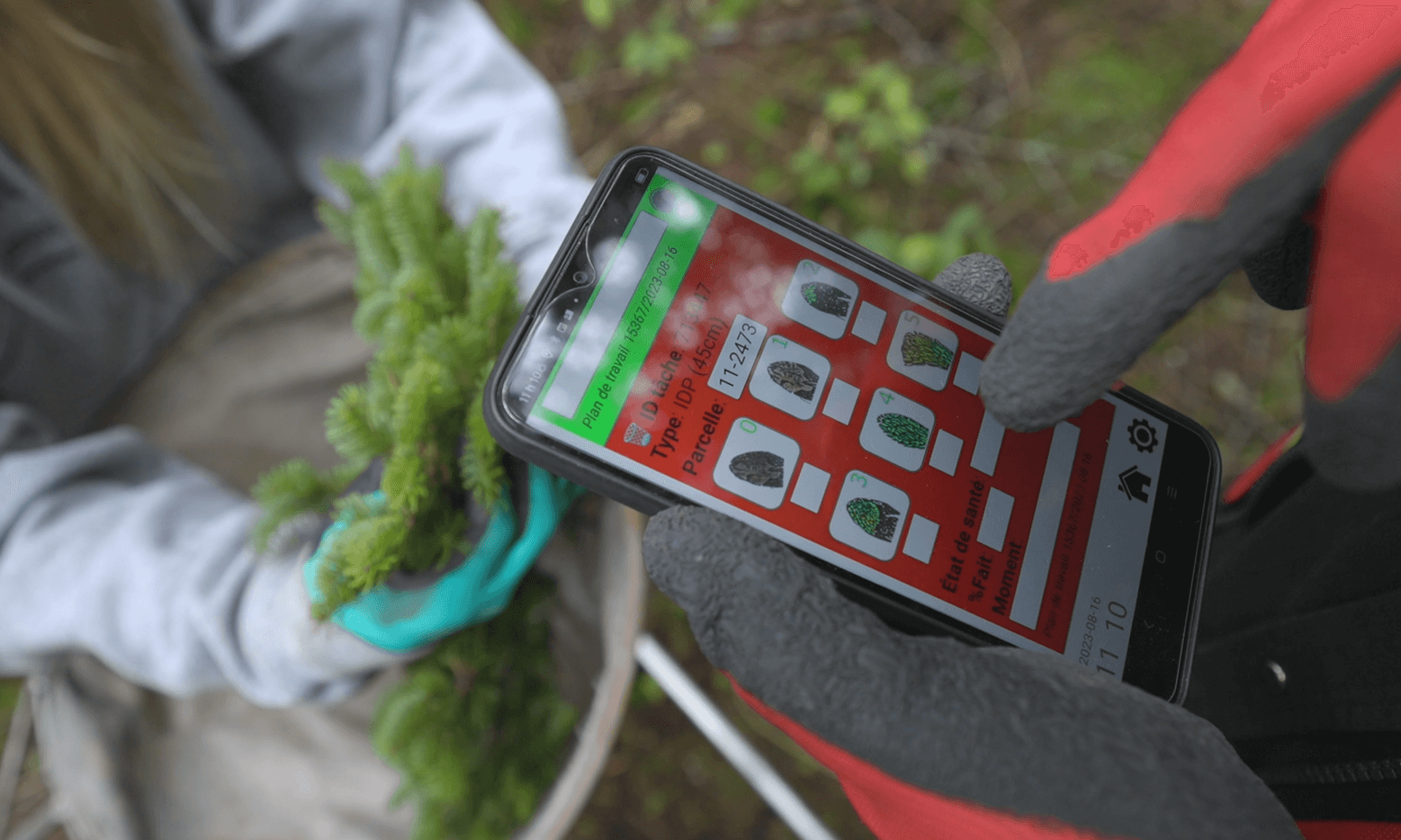
Spruce Budworm Cycle
In late April or early May, young caterpillars about 1.5 millimetres long, emerge from hibernation. Attracted by the light, they head to the ends of branches where they feed on the pollen of the flowers while waiting for the buds to open. If there are no flowers, they mine the old needles and the buds that are still closed. However, as soon as the new shoots unfold, the caterpillars weave a shelter formed by their droppings and debris of needles interspersed with silk threads.
They feed there until their sixth and final larval stage at the end of June. This is when their damage is most apparent. Sometimes, when the foliage of the year is completely destroyed, the caterpillars of the last two larval ages devour the needles of the previous years. In fact, caterpillars of the fifth and sixth larval ages are responsible for over 85% of defoliation.
Source: Ministry of Natural Resources and Forestry
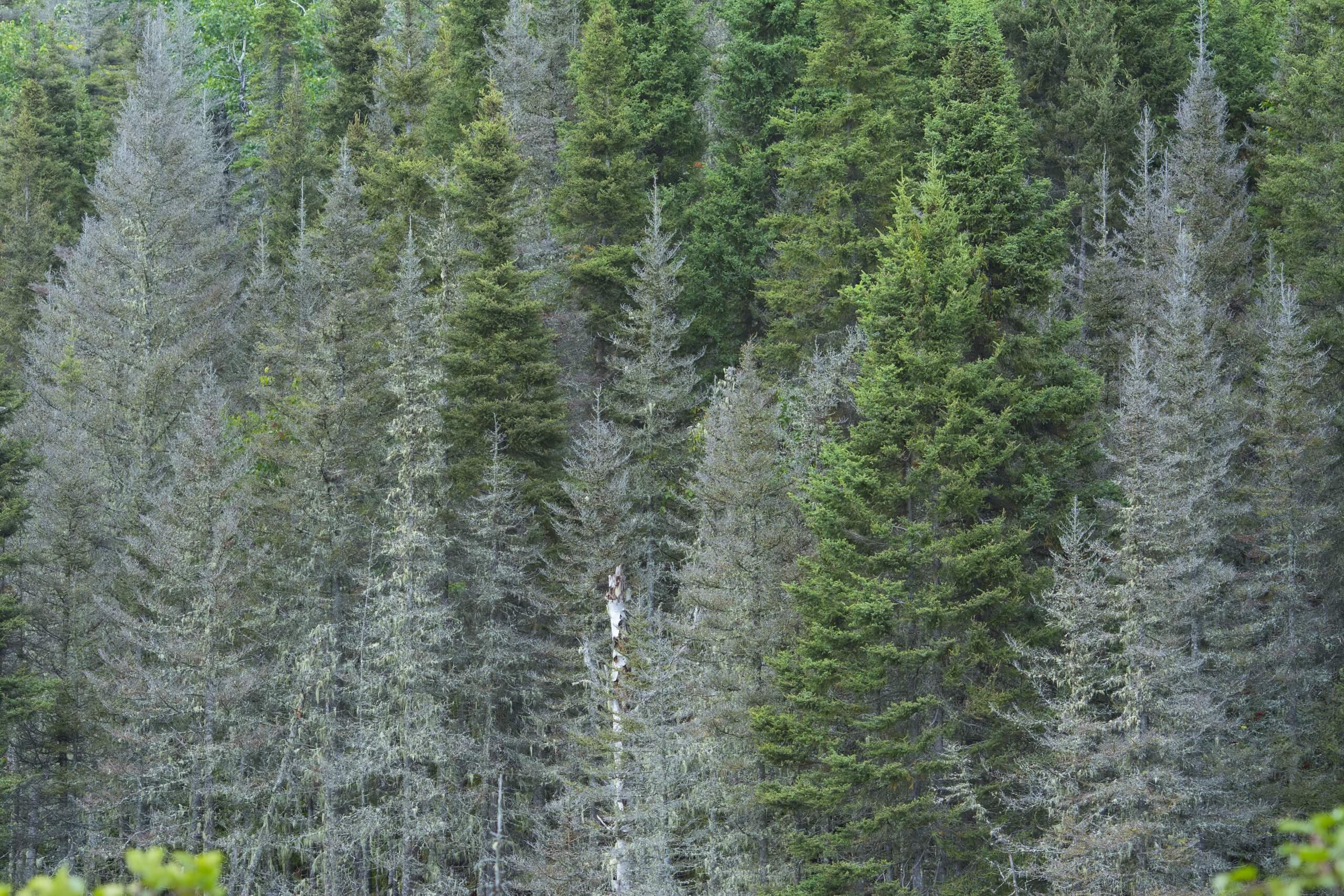
SOPFIM cycle
SOPFIM must plan its operations according to the different stages of evolution of the spruce budworm. We plan the program for the month of June throughout the year, as many steps need to be taken. The biological insecticide is not a contact insecticide, as the budworm must absolutely ingest the product. In this way, watering is carried out throughout the month of June, because it is at this time that the budworm is at the stage where it feeds a lot. The start of the program also depends on the weather. For the budworm to develop well, spring must not begin too late. Thus, if the temperatures are cold, its development will be delayed by a few days or weeks, which will delay the beginning of our program.
Thus, from the end of summer until the month of May, we prepare the upcoming watering program. Whether it is in terms of recruitment, watering planning or branch sampling, SOPFIM has established unparalleled planning over the years.

